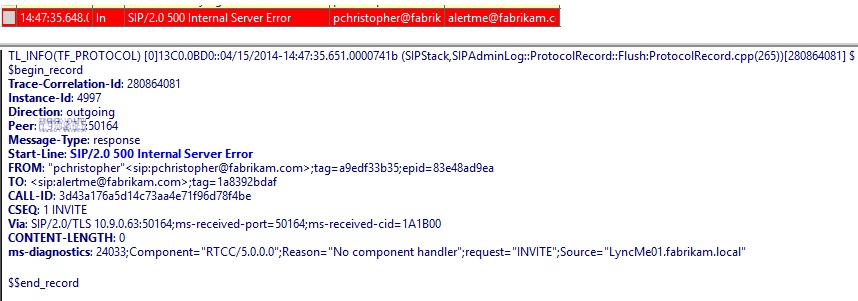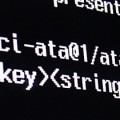UCMA Application: This message was not delivered to [user name] because the service is not available.
We spent far too long today looking at this, so I’m documenting it in the hope that it can help someone else.
The Problem
You’ve set up a UCMA Application. The application starts fine, provisions fine and generally seems to be running. However, when you attempt to send it an IM, it immediately fails with this message:
This message was not delivered to [user name]because the service is not available.
(on Lync 2010 clients, we actually just see a red cross with no supporting error message)
Digging In
We tore apart the installation of the application, the application server, the Lync server and the environment. We tested that IMs could be sent on the system – even putting a client on the application server to see if IMs could be sent there (they could). Looking at the logging we had on the application we could see that the message just wasn’t ever reaching the application.
Looking at the SIP traffic, this was the error we saw:
The Message start-line is:Â SIP/2.0 500 Internal Server Error and the ms-diagnostics error includes the cryptic message:Â No component handler.
On the Case
We finally resolved this when we went back to check the Trusted Application Endpoint settings. When they were created the SIPAddress value was set like “Sip:[email protected]” rather than the more standard “sip:[email protected]” (notice the capital S in the first example).
The single upper case S caused all incoming messages to fail. We simply changed the SipAddress property of the endpoint to a lower case s and everything started working.
So the rules are that you can only ever use lower case sip: as the SipAddress prefix!
@Microsoft: puuurlease! This stuff is hard enough already: if you’re not going to sanitize your PowerShell input, at least return a sensible error message. #NeverGettingThatTimeBack




![UCMA Application: This message was not delivered to [user name] because the service is not available.](https://blog.thoughtstuff.co.uk/wp-content/uploads/2013/04/code.jpg)



